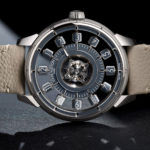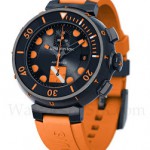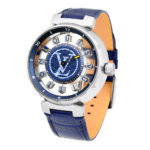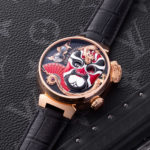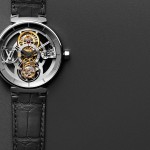Up Close: Louis Vuitton Tambour Taiko Spin Time Flying Tourbillon
A statement of manufacturing intent.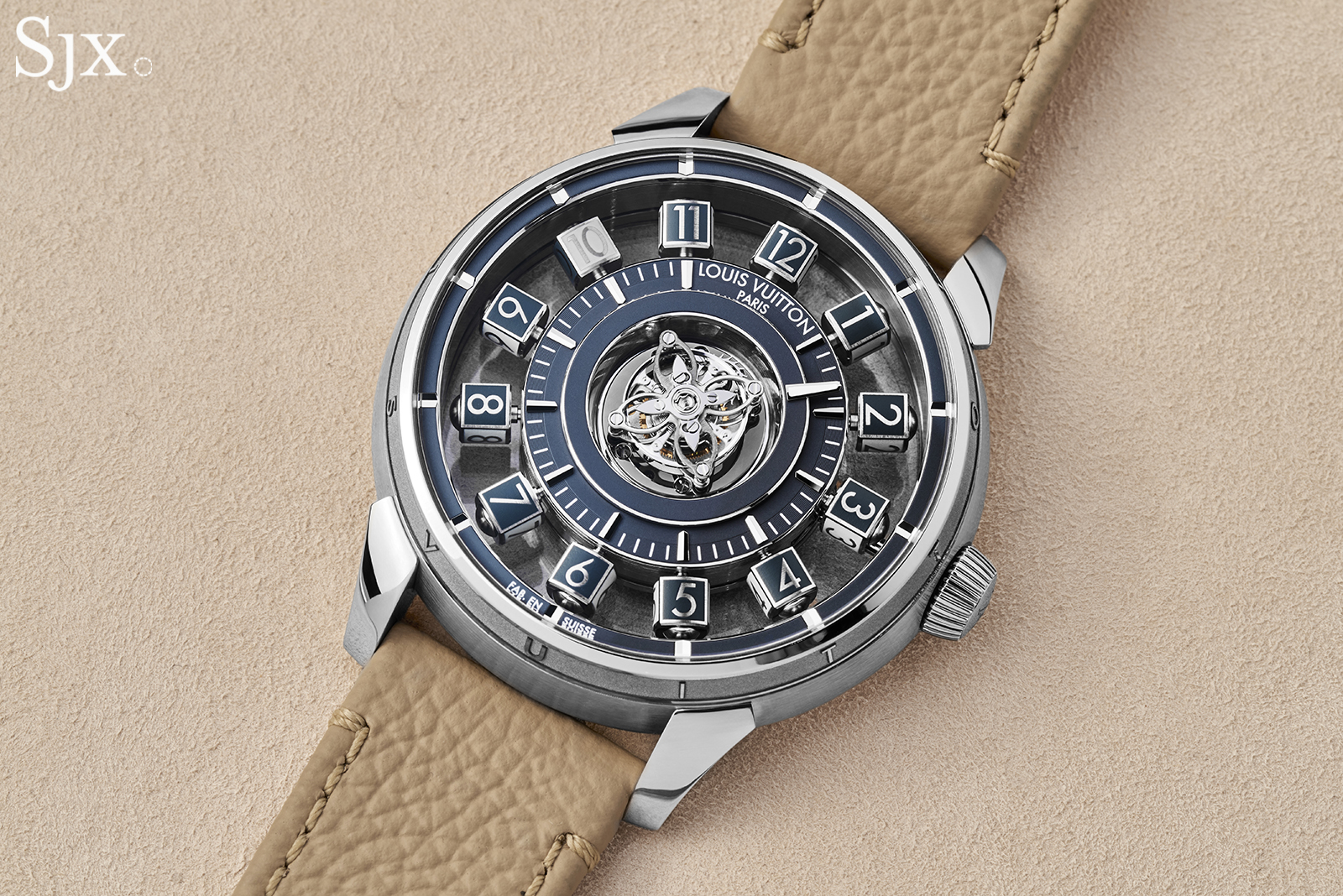
The signature complication of Louis Vuitton’s watchmaking, the Spin Time is a jump hours with a twist that is now 16 years now. Earlier this year, the complication was given a major technical and aesthetic update with an all-new collection, the Tambour Taiko Spin Time, featuring a new case and a new movement family – both developed and produced in-house.
The flagship model is the Tambour Taiko Spin Time Flying Tourbillon that combines the jumping hours with a central flying tourbillon – a logical use of the peripheral arrangement of the time display. Though the most complicated (and expensive) of the line, the Flying Tourbillon has all of the key elements of the Tambour Taiko, including the redesigned case and a new movement made by La Fabrique du Temps (LFT), Louis Vuitton’s Geneva watch manufacture.
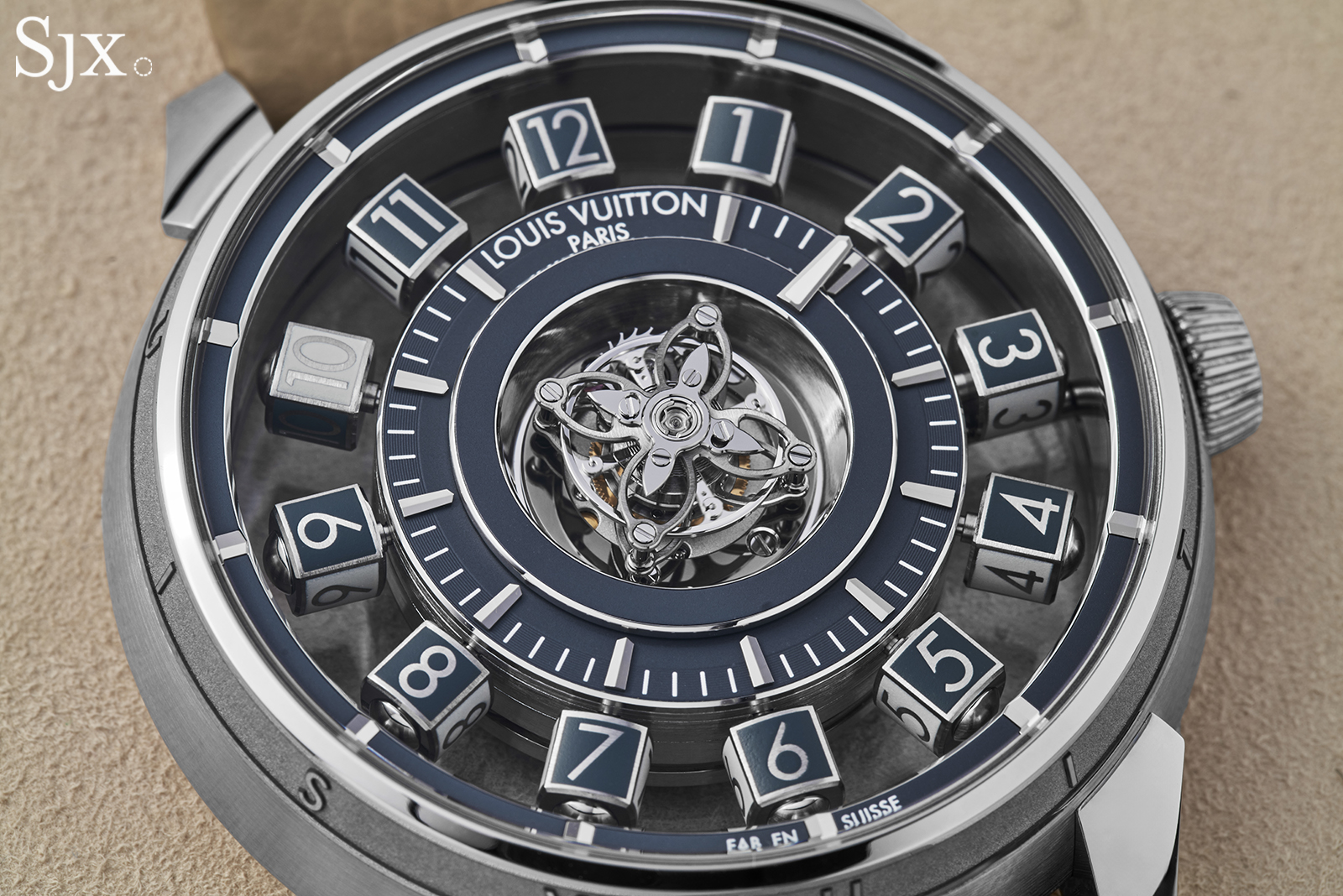
Initial thoughts
Whether or not you like the watches themselves, the Tambour Taiko Spin Time collection is a statement of intent by Louis Vuitton. The brand has made substantial investment in vertical integration and manufacturing, essentially watchmaking, and the Tambour Taiko line-up is proof of that.
More specifically, the family of movements that underpins the Tambour Taiko illustrates the industrial-haute horlogerie capability that Louis Vuitton has developed in a relatively short period of time, the very sort of competence required to build a high-end watch brand at scale.
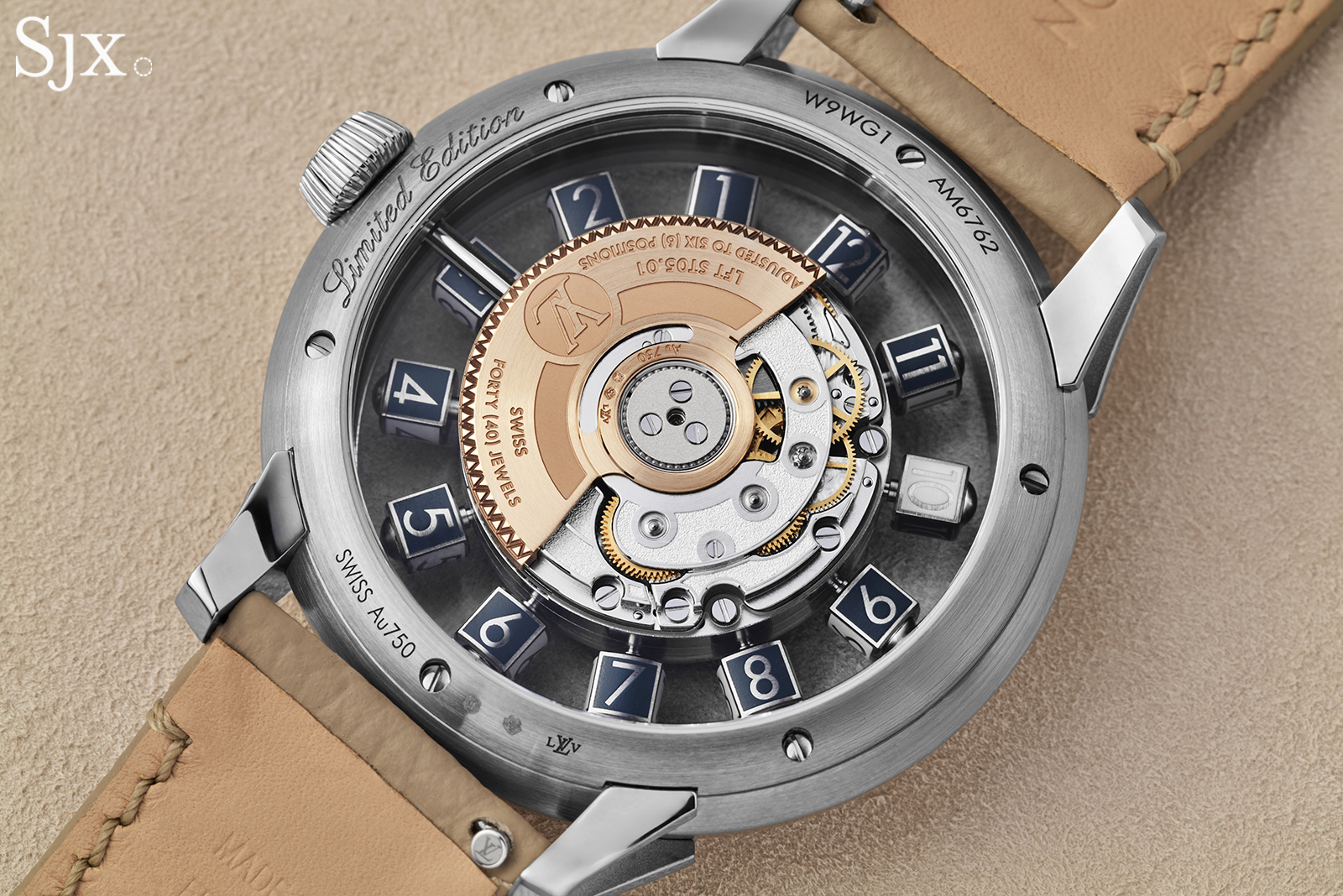
The movements in the Tambour Taiko collection now number three, but are all part of the same family of automatics that was clearly constructed to be versatile enough to be expanded to incorporate varying complications and sizes.
The movement construction is largely comparable to the workhorse movements offered by the traditional big names in Geneva industrial-haute horlogerie. I would personally opt for some changes to stylistic choices in the calibres, but they are clearly well thought out.
That said, some of the design choices reflect well on the designers as they reflect an enthusiast’s eye. Details like “Fab. En Suisse” on the dial and the hallmarks on the rotor indicate knowledge of vintage watches.
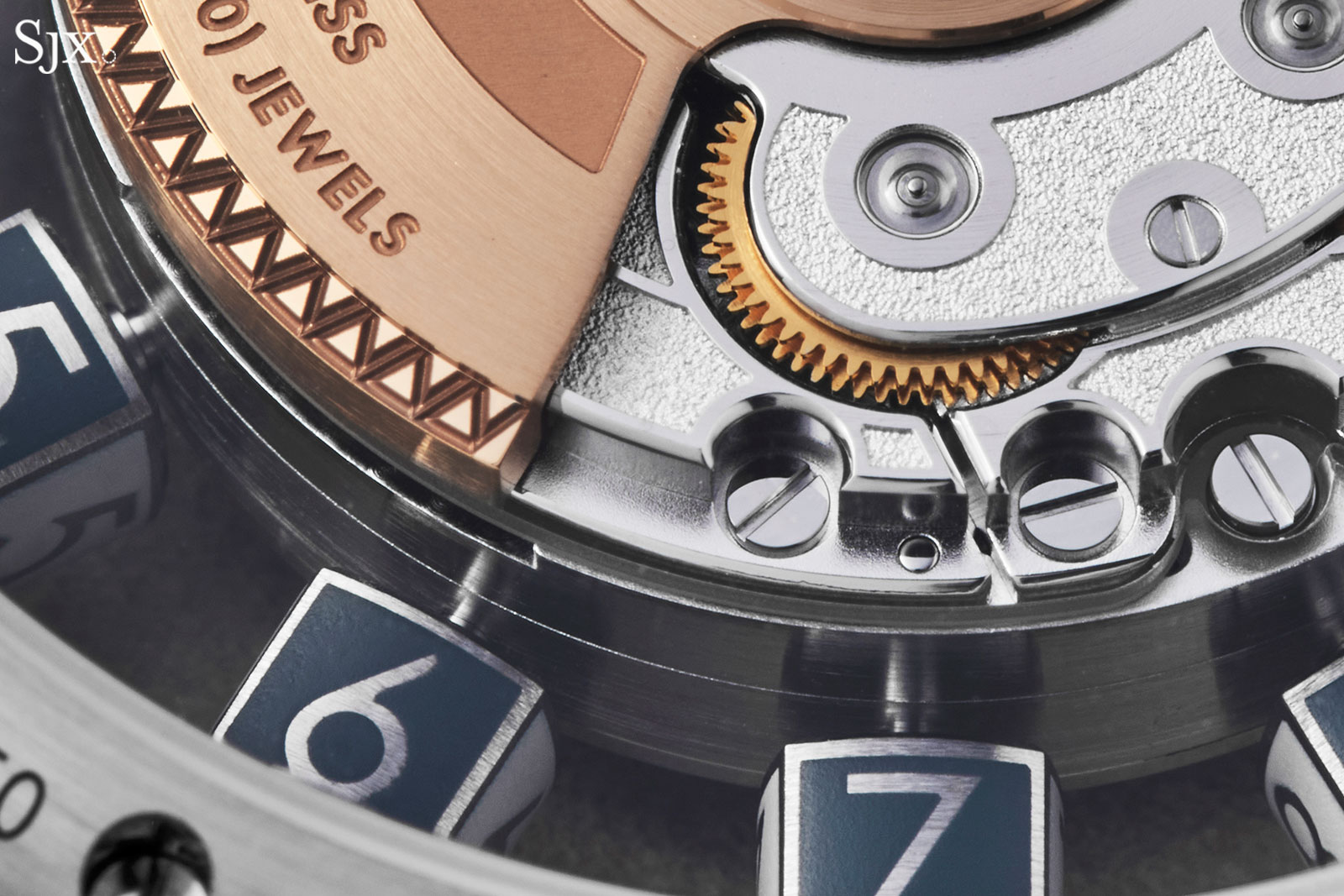
As for the Tambour Taiko watches – I like them. The Spin Time Flying Tourbillon is the most interesting of the line up because it combines the jumping hours with a relatively rare on a common mechanism, the tourbillon regulator. It is, however, pricey for what it is, coming in at twice as expensive as the Spin Time Air that’s essentially the same thing sans tourbillon.
More broadly, the Tambour Taiko case is a study in modern case making at the highest level of industrial quality. It is executed extremely well, and boasts details only possible with inordinately expensive machines, reflecting the investment Louis Vuitton has made in LFT.
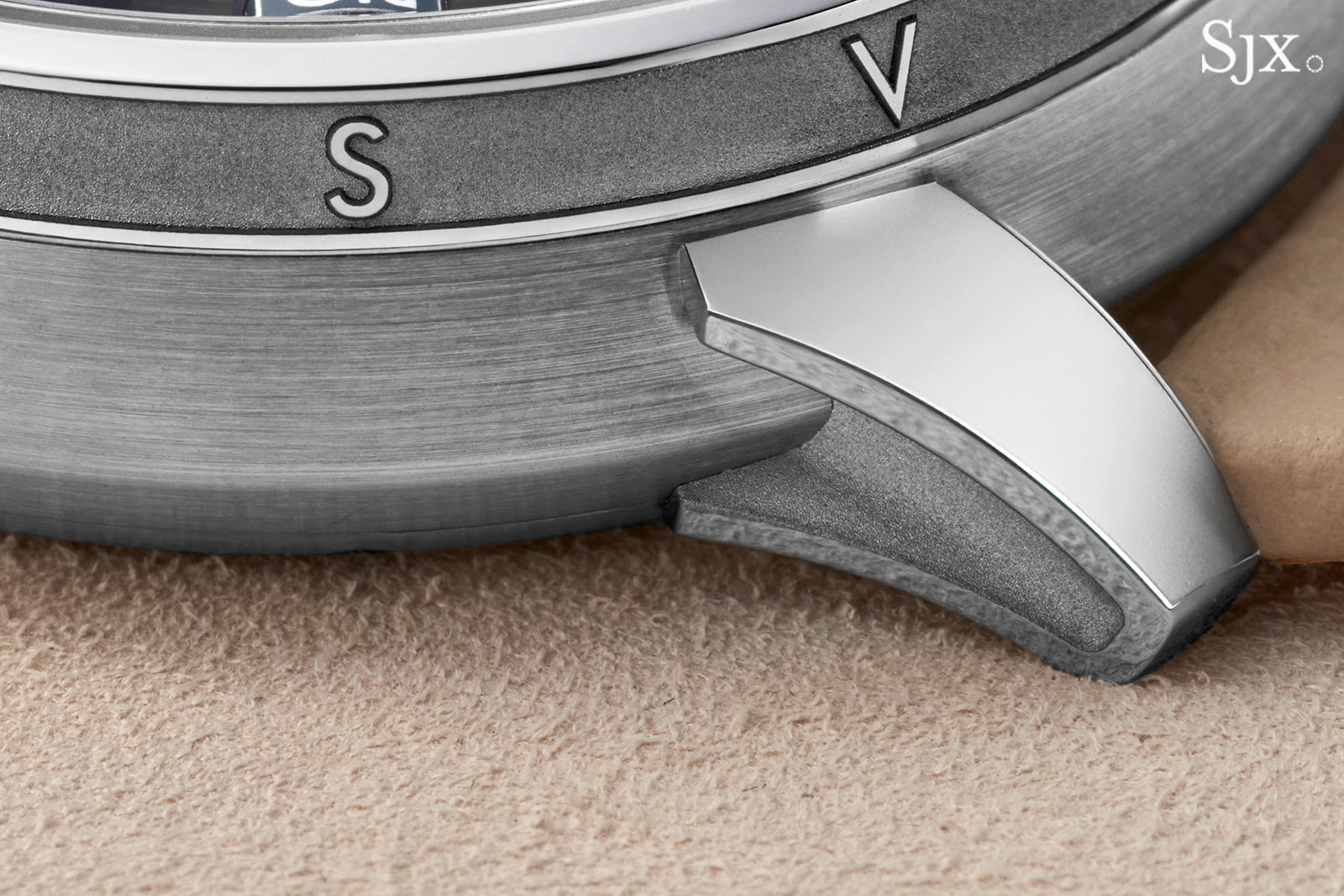
I do wish the Tambour Taiko kept a bit of the flamboyance of the first generation models. Those were big, bold, and often colourful. In fact, I am wearing one of those oversized Tambours as I write this; its proportions are a little ridiculous but the design has a peculiar charm.
The Tambour Taiko, in contrast, is elegant despite being large, and restrained in “dolphin grey”. The blue-and-grey palette is just a start, and I expect more colours will be injected into the Tambour Taiko in time to come.
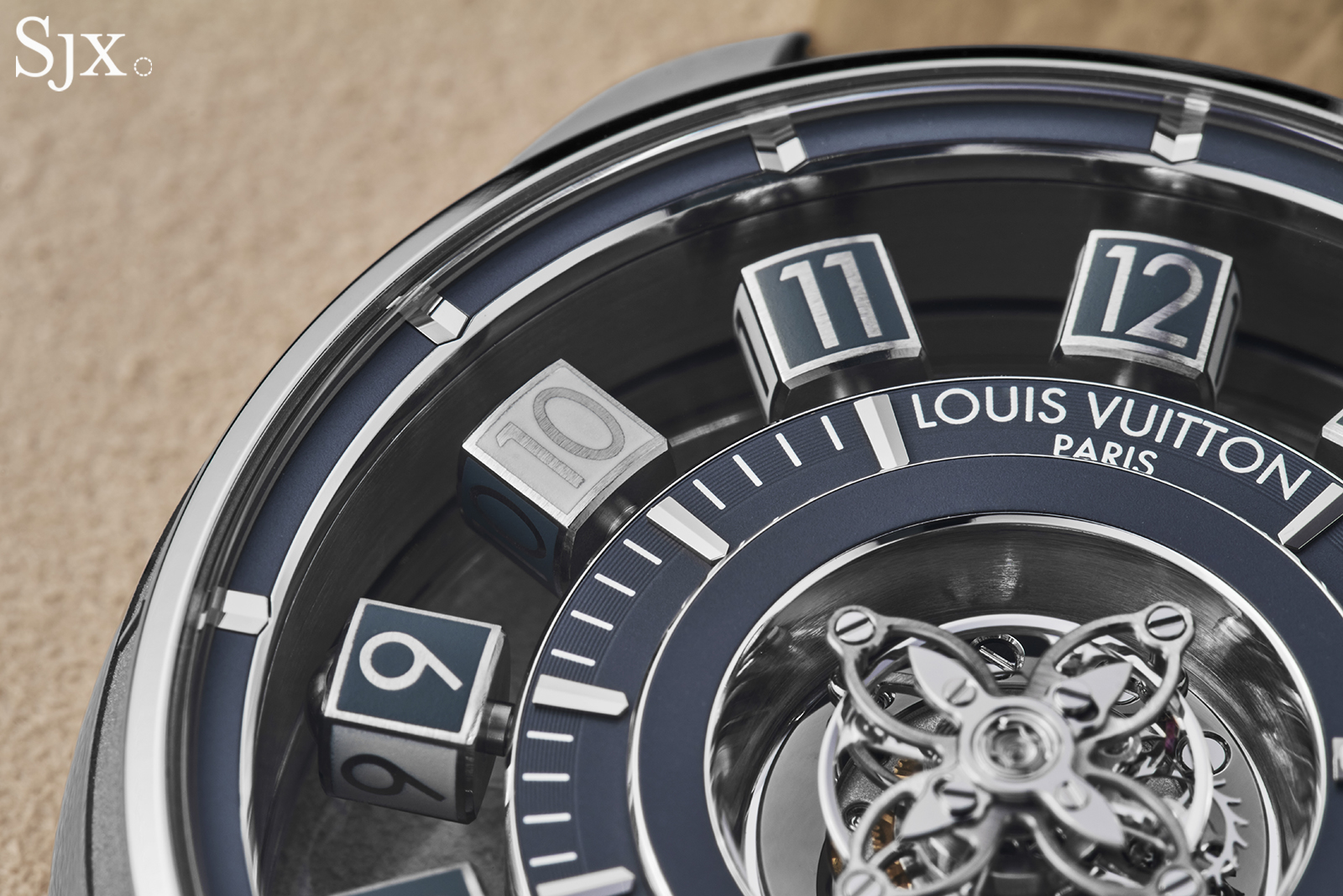
Three-dimensional hours
Unorthodox time displays like the Spin Time are typically the domain of independent watchmakers – Urwerk’s trademark satellite cube display comes to mind – and Louis Vuitton can justifiably claim the complication is unique.
Though now synonymous with the brand, the Spin Time was actually developed by LFT when it was an independent movement specialist. Louis Vuitton acquired exclusive rights to the cubic display in 2007, then launched the first Spin Time model in 2009, before taking over LFT in 2011.
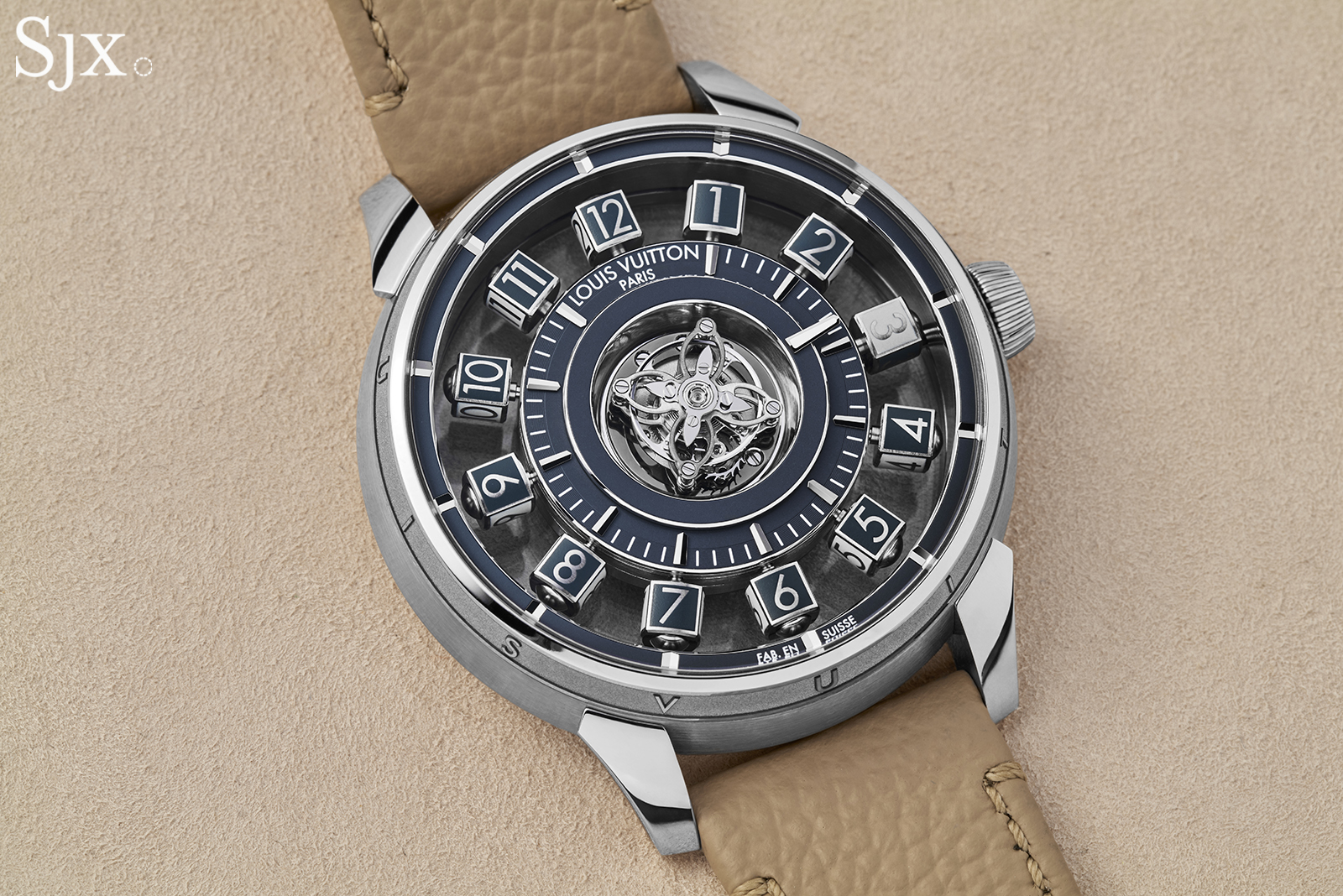
The Spin Time is conceptually simple but elaborate in execution. The hours are arrayed on 12 cubes, with the current hour indicated by a contrast colour face. At the top of each hour, two cubes rotate simultaneously – the cube for the previous hour rotates to blend in with the other faces, while the cube for the current hour rotates for the contrast colour to face up.
Accomplishing this requires an uncommon mechanism in watchmaking, one that translates a lateral motion into a vertical one. This is done with bevel gears, essentially wheels that mesh at 90-degree angles, along with a Maltese cross gear for each cube.
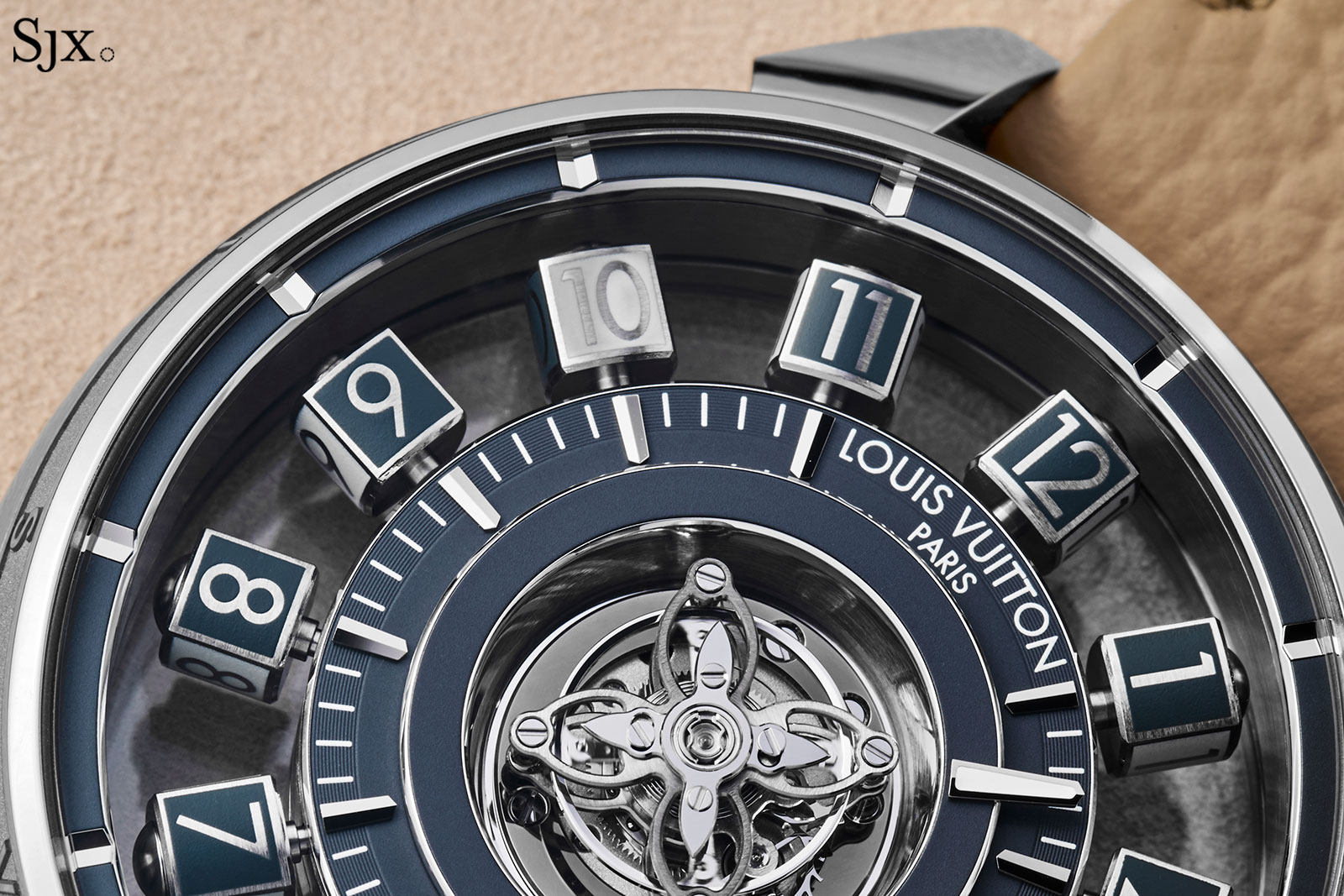
The latest generation Spin Time retains the same display format, but with improved underlying mechanics. Amongst the upgrades is the seamless jump at the top of each hour that eliminates the slight but visible “arming” motion prior to each jump. The jumping motion of each cube that takes place every 60 minutes is quite satisfying to watch.
And more useful is the ability to set the hours backwards and forwards; in the earlier generation movement only forwards setting was possible that occasionally made it tedious to set the time.
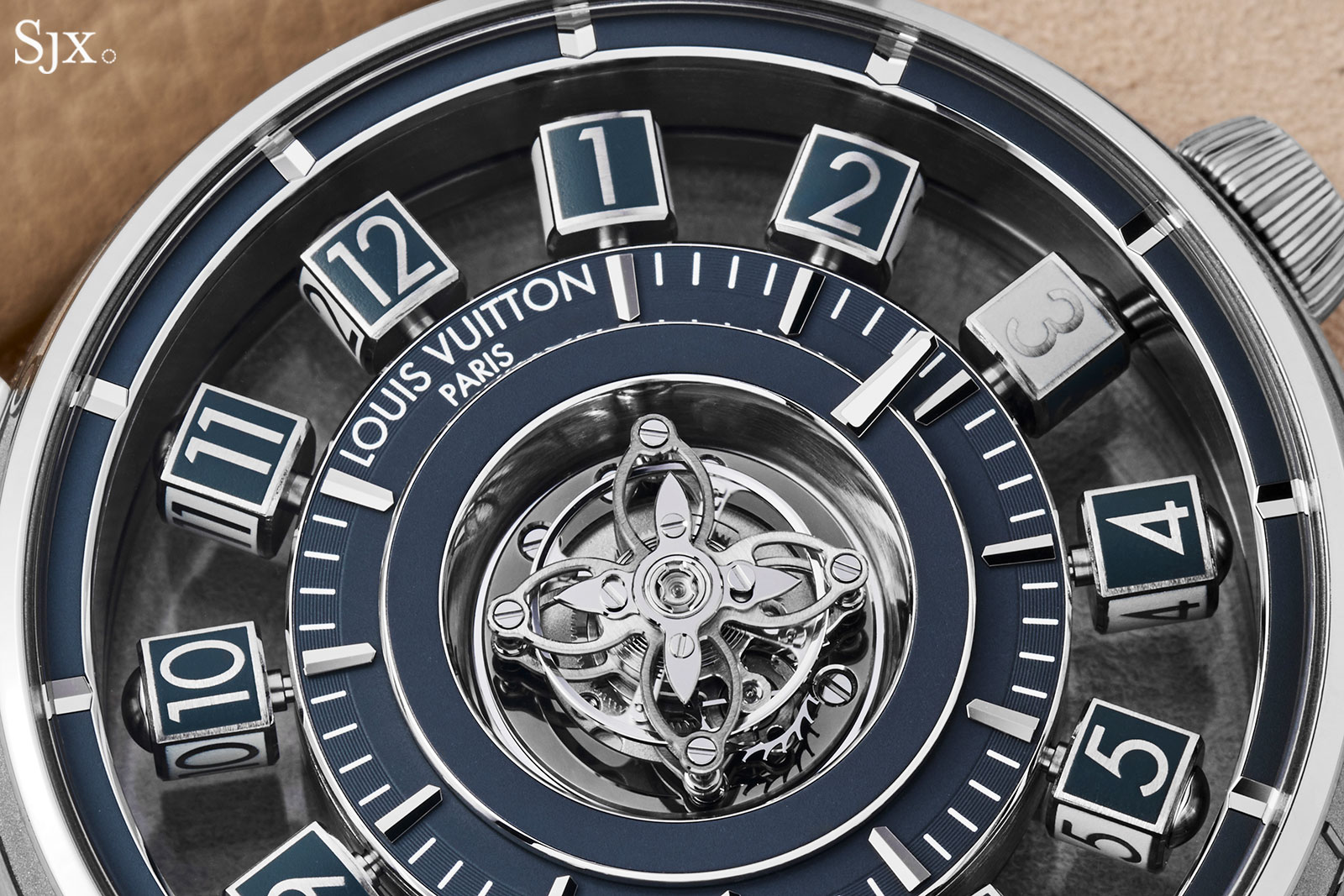
The visuals of the cubes have also been reworked, but subtly. Instead of four flat faces, each cube now sports gently rounded faces that result in a more refined appearance.
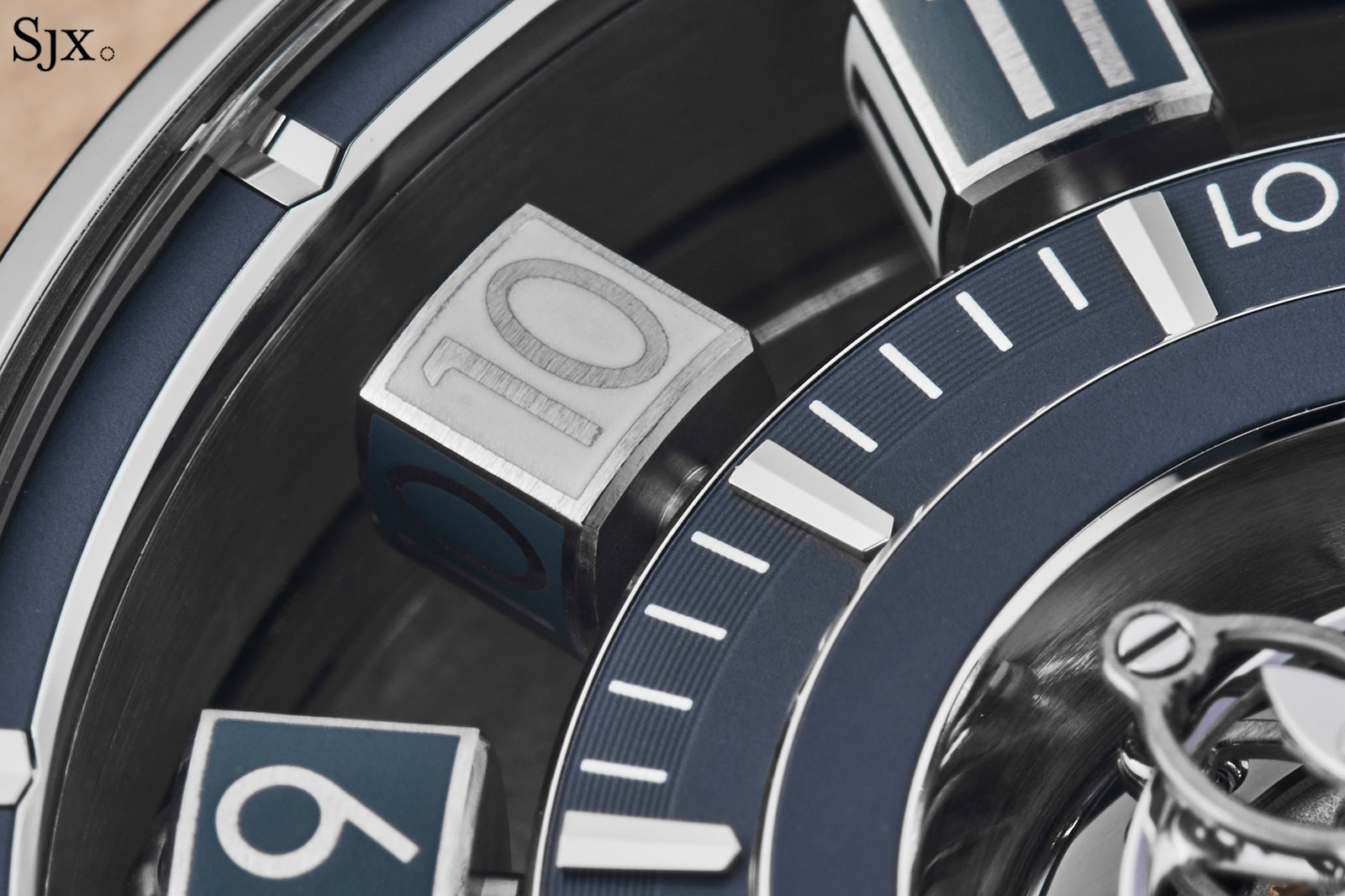
While the cube display is identical across all the Tambour Taiko models, the Flying Tourbillon model stands out for the regulator right in the centre of the dial.
The flying tourbillon sits in a deep recess that is possible thanks to the peripheral construction of the Spin Time display module as well as the relatively thin base movement. As is typical for a central Tourbillon, the minute hand is a peripheral pointer that travels around the tourbillon.
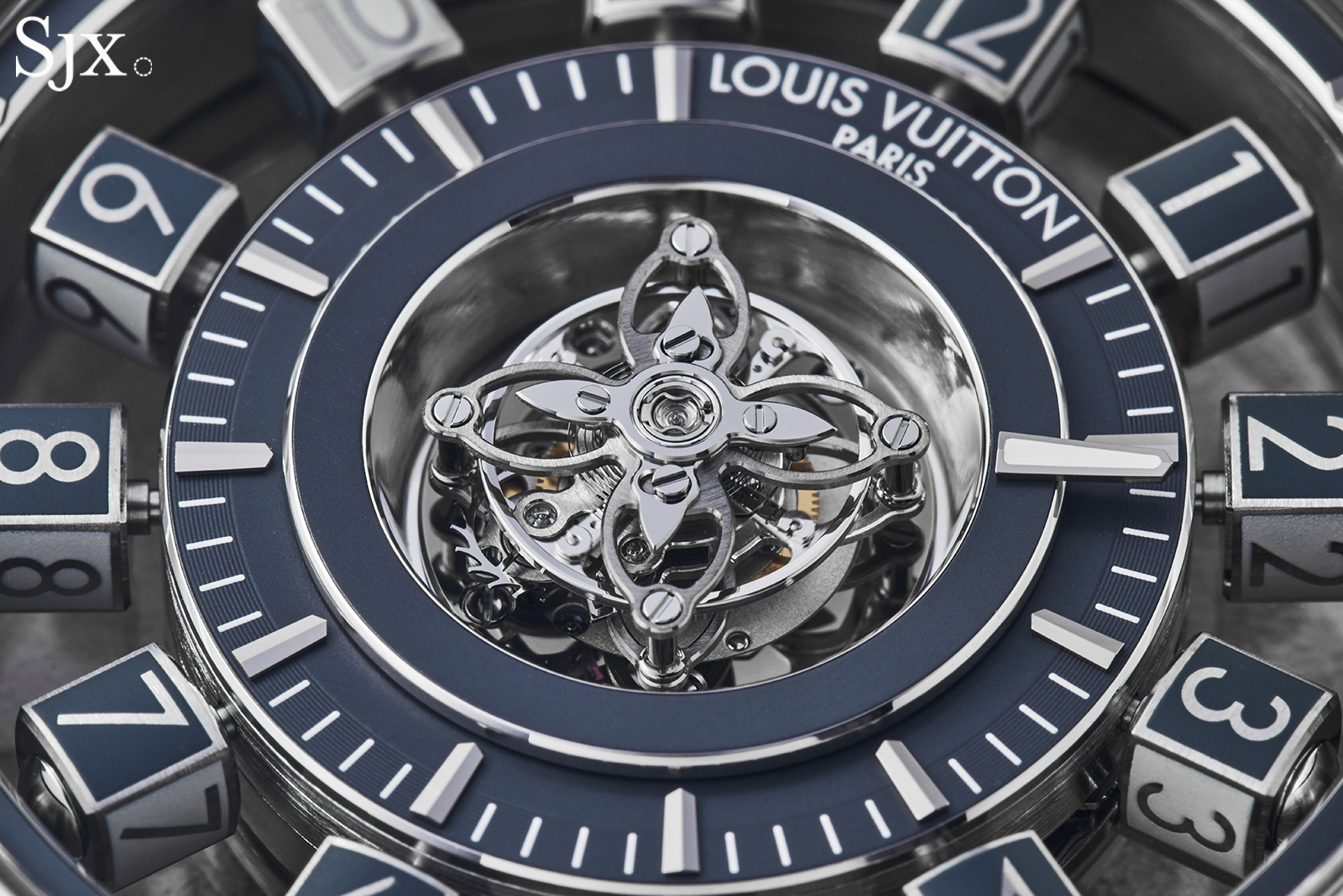
The tourbillon itself takes the form of a “Monogram Flower”, one of the recurring emblems employed by Louis Vuitton. Interestingly, it is actually made up of a double “flower”, an open-worked flower forming the upper cage, and a black polished flower as the stud carrier.
Like the rest of the movement, the tourbillon cage is finished in industrial haute horlogerie style, similar to what you’d find in a Patek Philippe or Poincon de Geneve-certified movement. That said, it is perhaps a missed opportunity to do something fancier, either in terms of finishing or form, given the prominence of the regulator. Louis Vuitton does have the capability for that; its catalogue includes tourbillon movements with more elaborate decoration but at significantly higher prices.
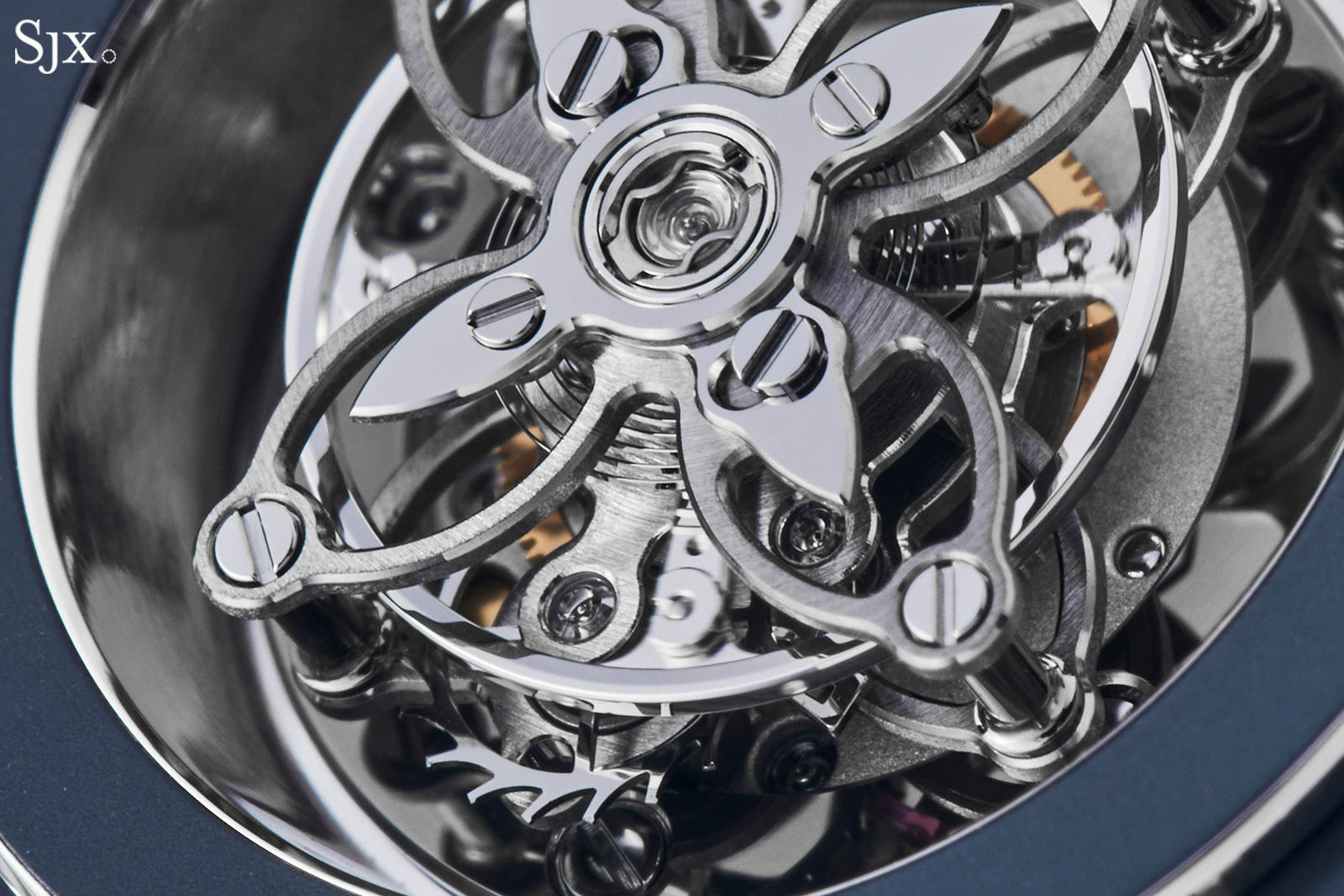
Redesigning the “drum”
Tambour is French for “drum” and the original Tambour was decidedly drum-like. Even in its smallest formats, the original had tall, sloping sides and notched lugs that were probably too narrow for the case but gave it a distinctive outline.
For owners, the lugs are a pain. They render strap options extremely limited, since aftermarket alternatives are almost impossible due to the shape.
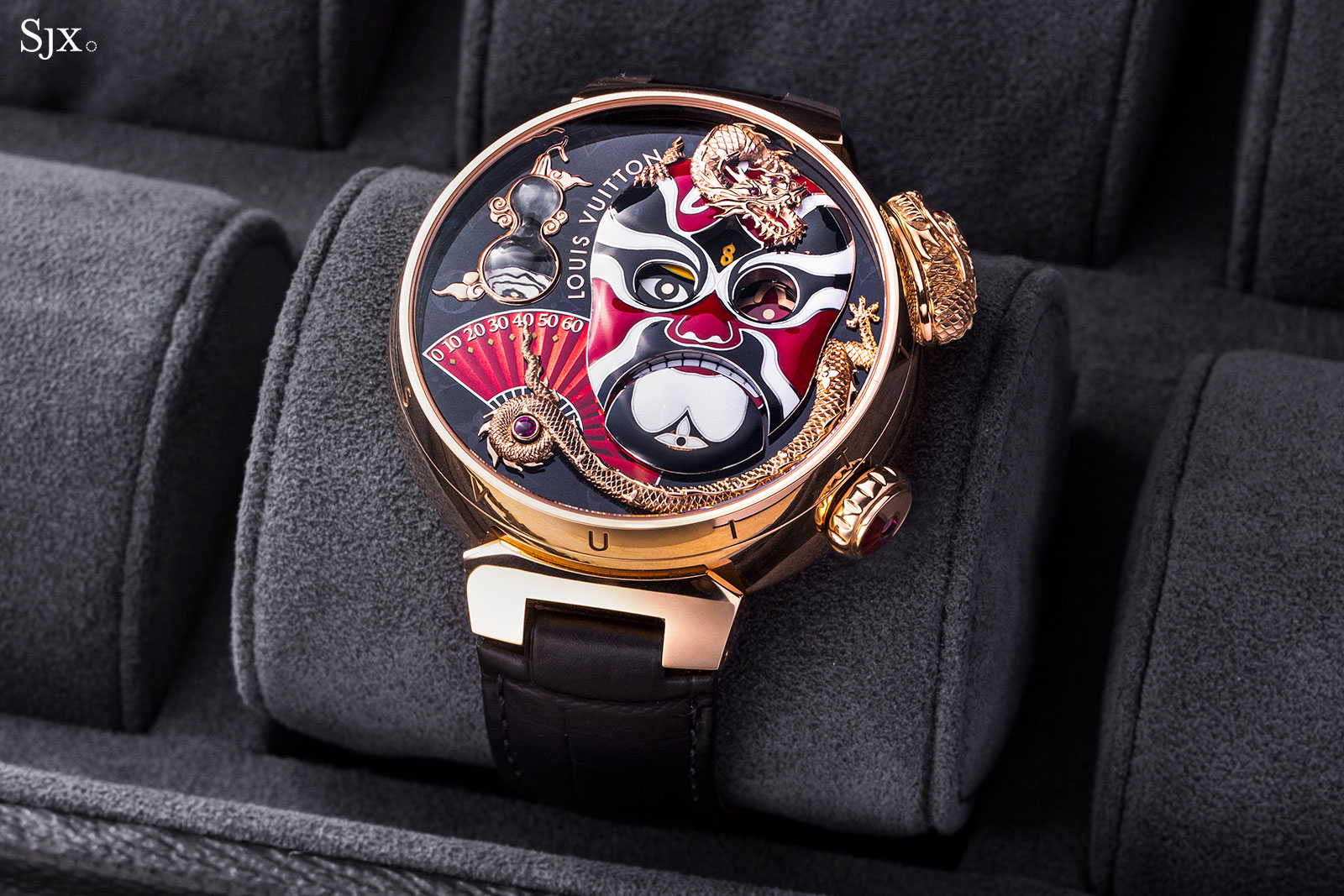
The original Tambour case, notice the narrow lugs relative to the large case
Named after traditional Japanese drums known as taiko, the Tambour Taiko is more elegant and coherent than the original. The original had an unconventional charm and was perhaps an acquired taste (though I like the design), while the Tambour Taiko is more composed and sensible. For example, though the Tambour Taiko still has arched lugs, they are now conventional in form and can take an ordinary watch strap, allowing the wearer an endless choice of alternatives.
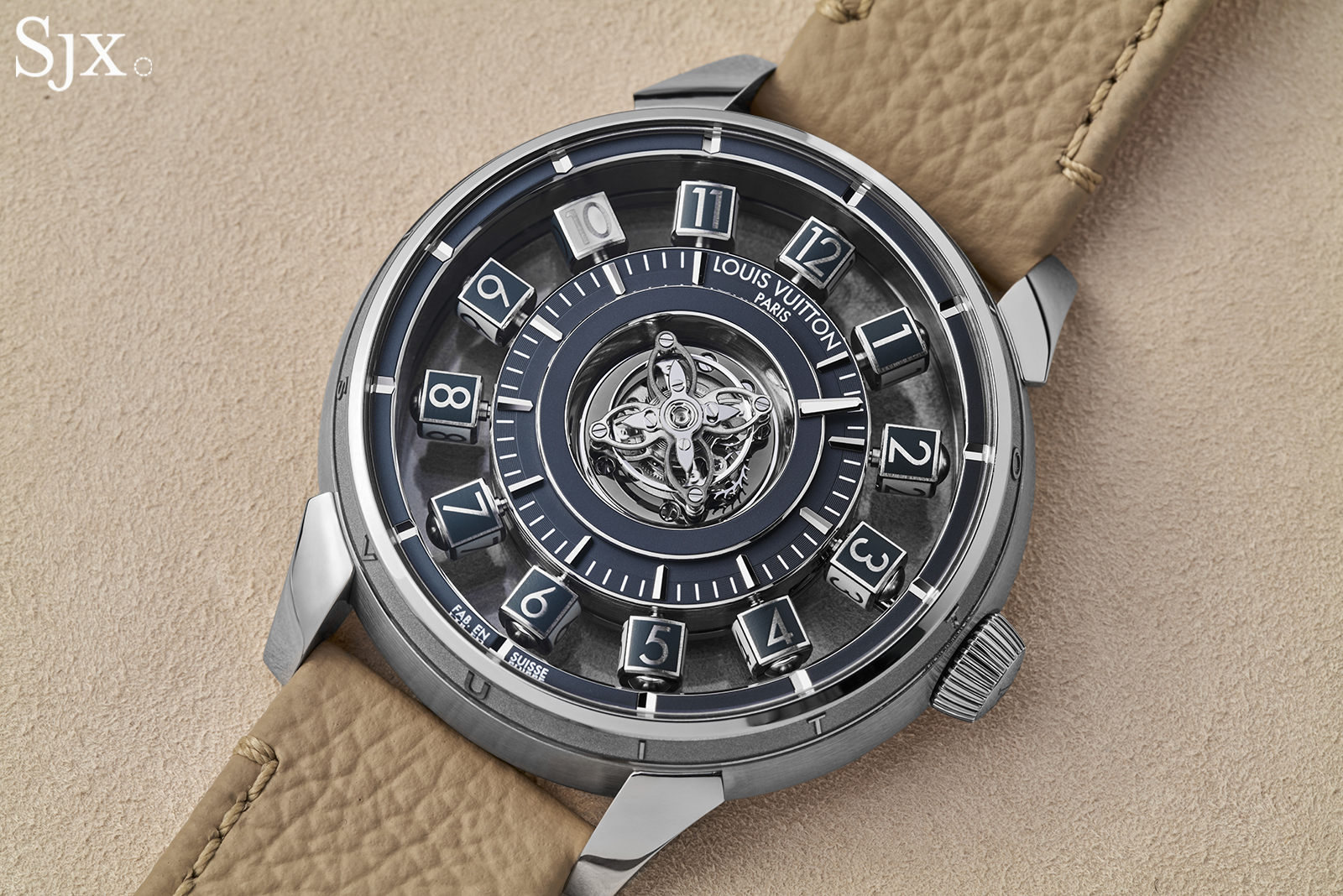
The Taiko still retains the outline of the original, but with a more grace and nuance. The case flanks are still sloped, but now brushed instead of polished, with the height broken up by the relief bezel. Concave lugs further help camouflage the height.
In all its forms, the Taiko is relatively thick due to the Spin Time display that necessarily requires lots of vertical space. The design of the Taiko case, however, make it less tall than expected. This contrasts with the original Tambour that always appears thicker than it is.
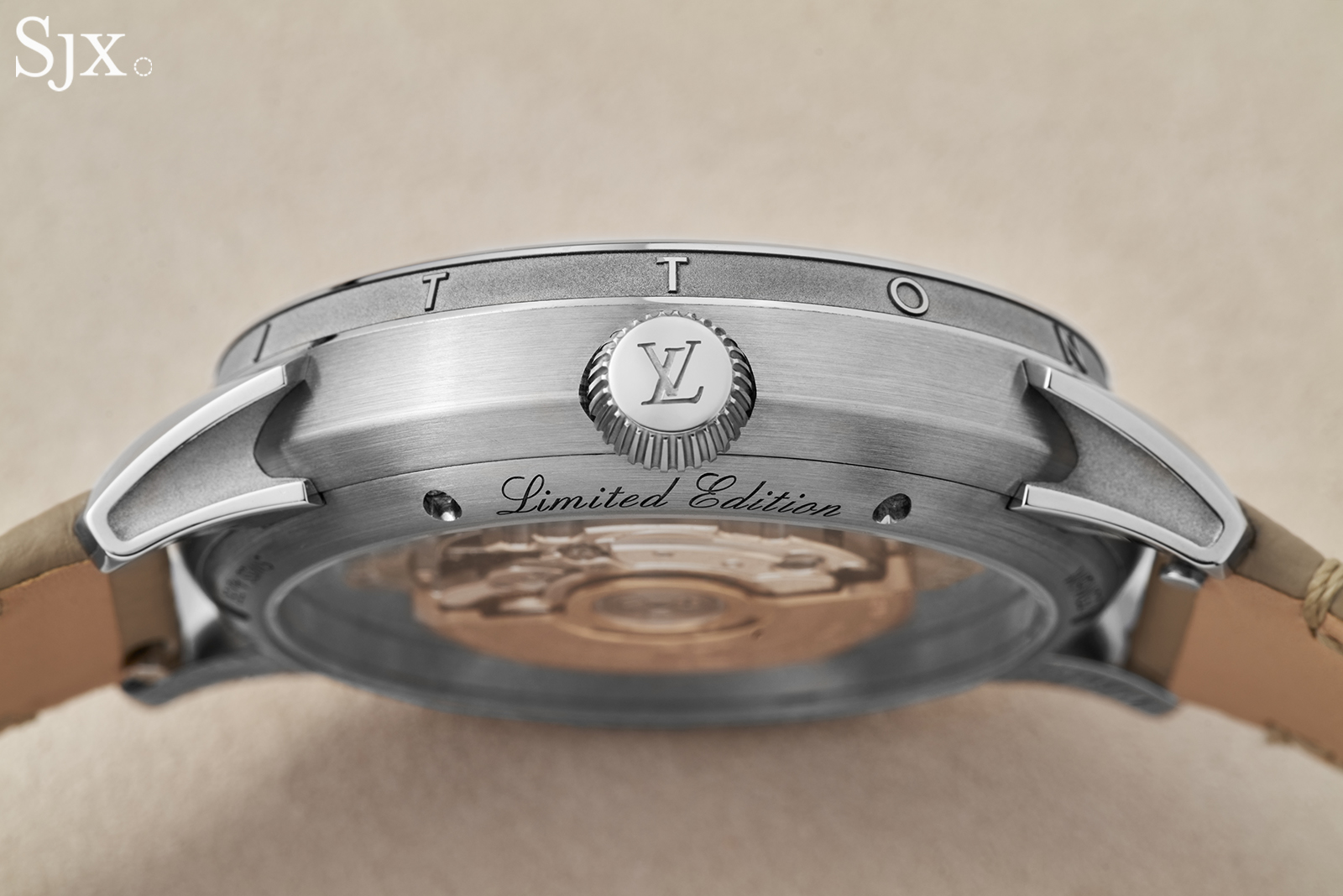
One of the most appealing details on the case is the frosted inner surfaces on the bezel and lugs. The bezel sports relief letters that spell out “Louis Vuitton” against a frosted recess, while the deeply hollowed sides of the lugs are similarly frosted.
The recessed nature of the frosting means it is can only be achieved with a high-tech process, namely laser polishing, essentially a laser that precisely engraves a frosted surface.
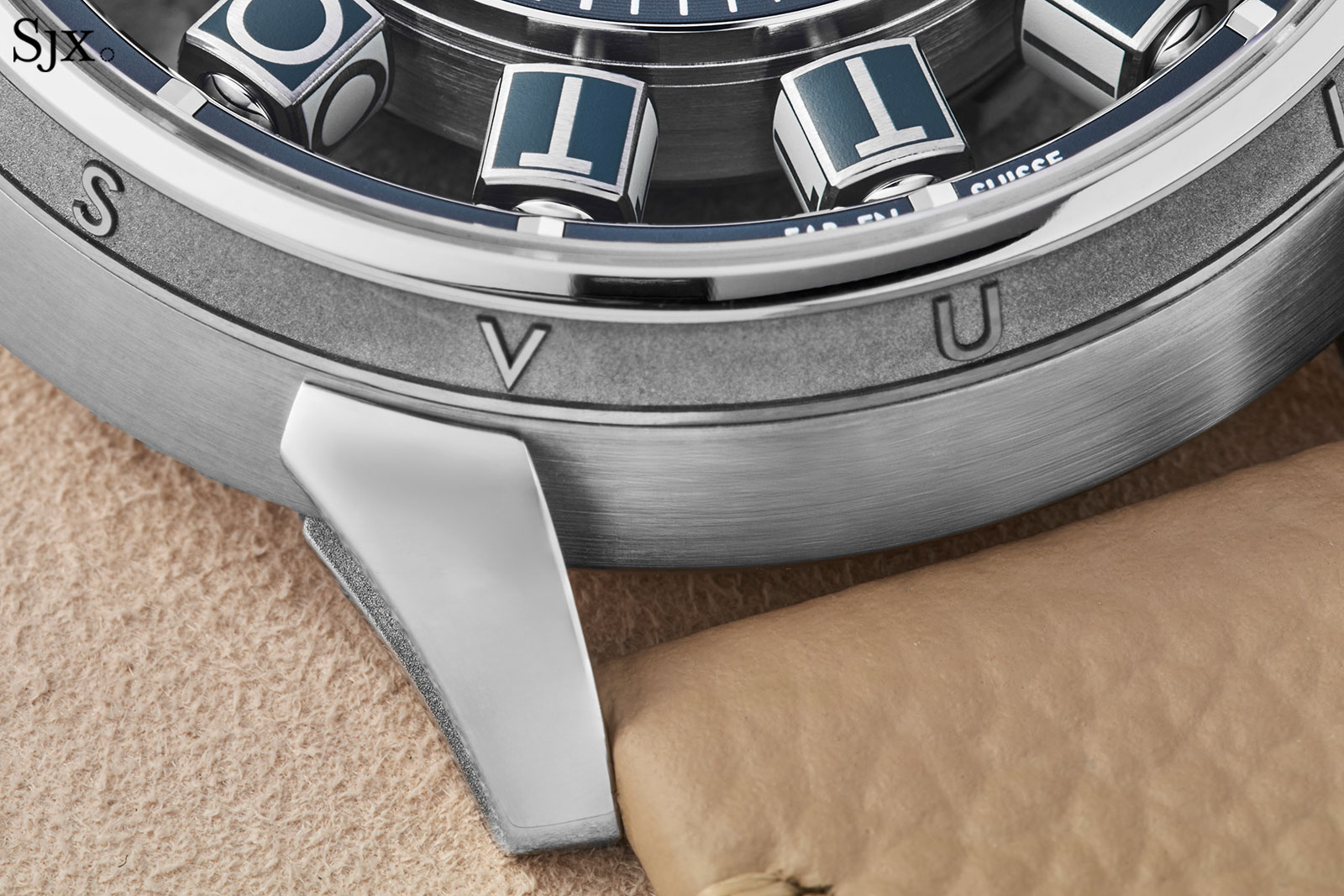
The lugs are also impressive for their fine tolerances, reflecting the impressive case-making operation at LFT. Each lug is a separate piece secured to the case but the seam between the two is barely discernible even under magnification.
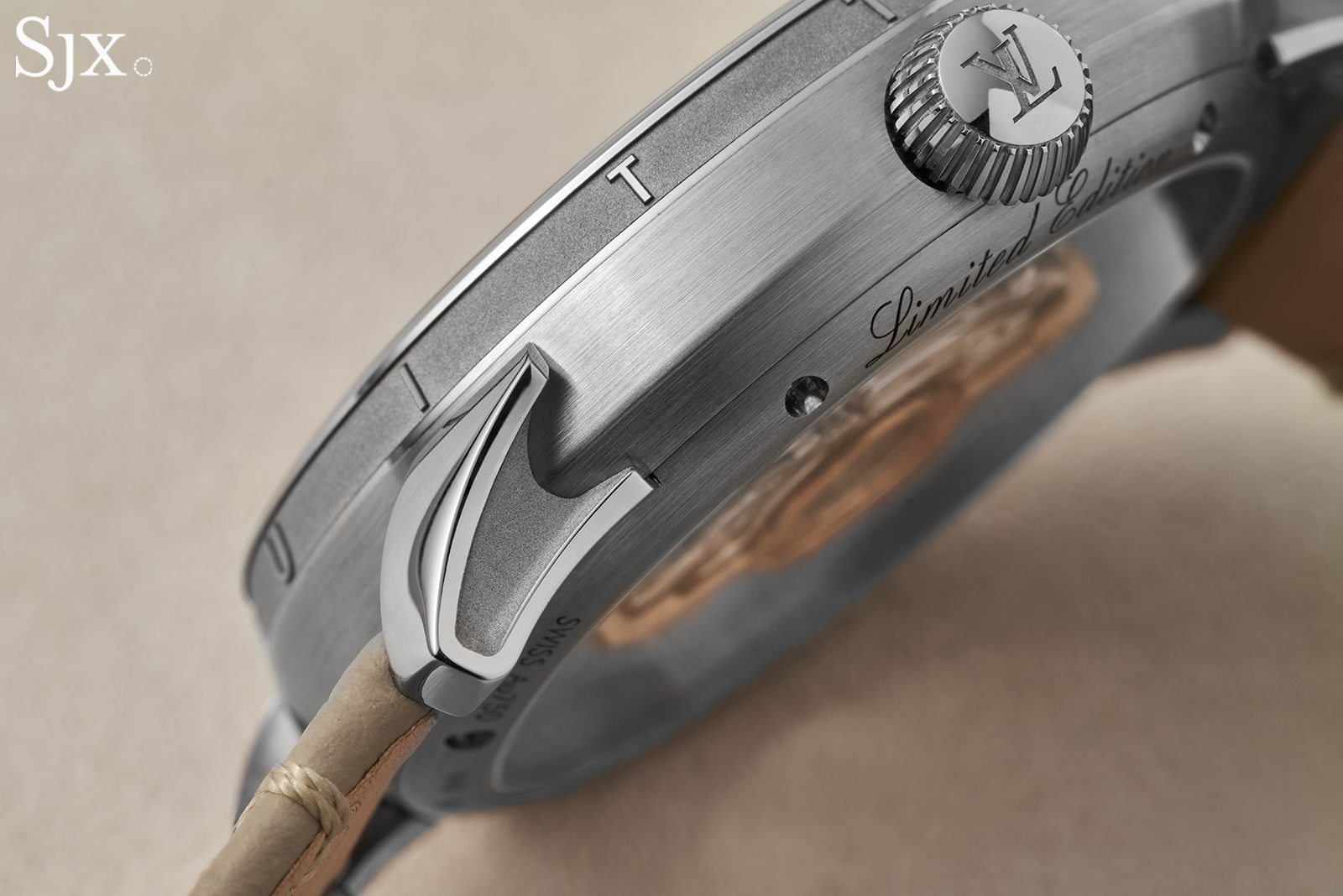
A new calibre
The LFT ST05.01 movement inside the Spin Time Flying Tourbillon is part of the family of calibres found in the rest of the Tambour Taiko models. There are three movements in the collection at the moment, with all essentially being derivatives of each other, sharing similar dimensions, construction, and decoration.
The base movement is relatively compact, since a good deal of space inside the case is occupied by the cubes. In fact, the size of the base movement is comparable to that of a calibre developed for ladies’ watches. That helps explain the relatively short 45-hour power reserve, though the construction of the calibre family appears to allow for other derivative movements that are larger with longer mainsprings.
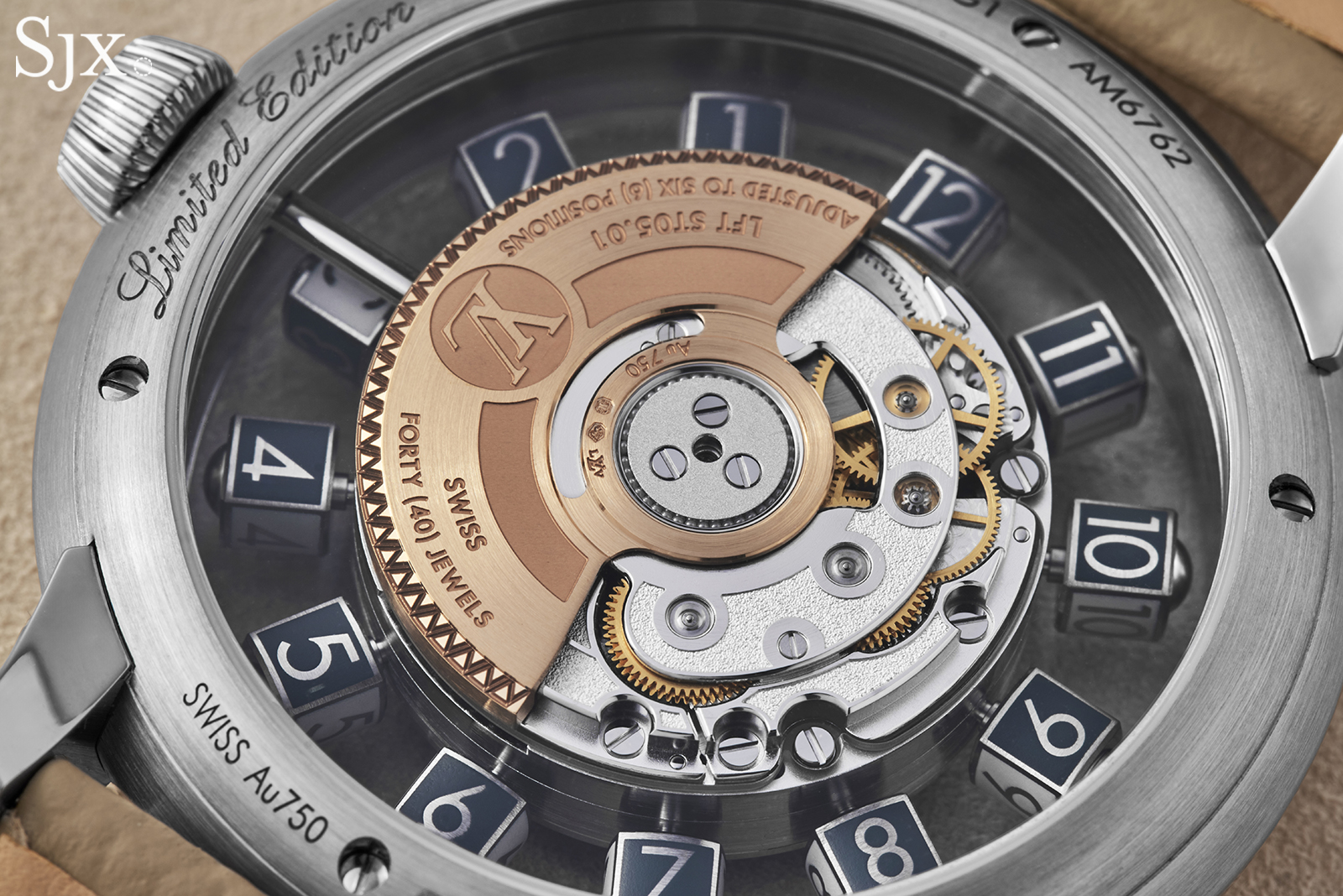
Power reserve aside, the calibre has the specs and details expected of a modern, high-end movement. These include a free-sprung balance with a Geneva-style stud carrier on the versions without a tourbillon, as well as no wire springs used in the construction.
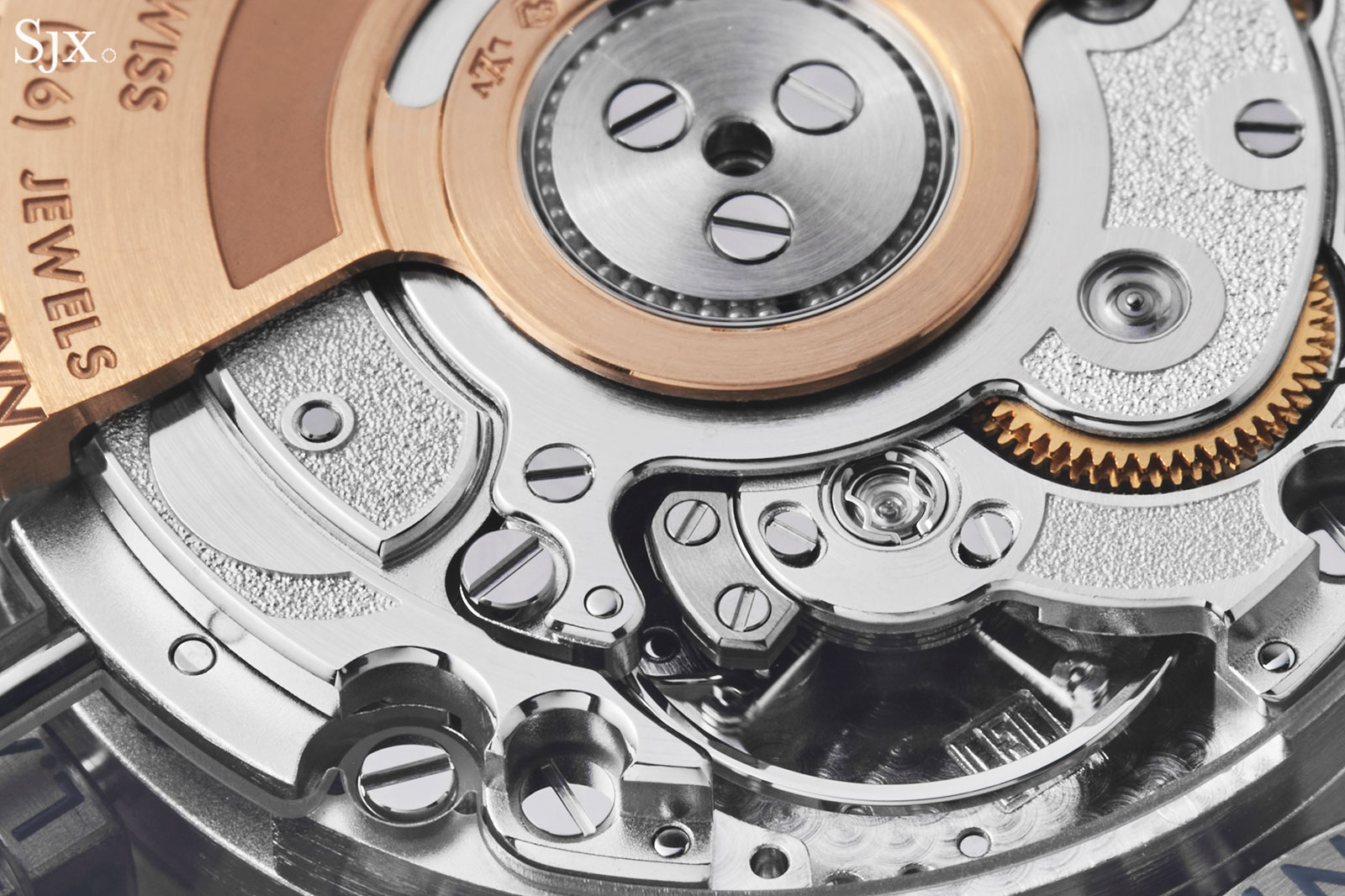
The free-sprung balance in other iterations of the movement
In terms of decoration, the movement continues with the style established with the thin Tambour launched two years ago. The look is subtle but recognisable. The bridges have raised borders around frosting, while the jewels are clear. The rotor is 18k gold with an engraved “V” pattern on its edge.
Comparing this in-house calibre to the outsourced movement in the thin Tambour (which came courtesy of Le Cercle des Horloger) makes the quality of the LFT calibre even more obvious. This is evident in the construction, with the regulator for example, and also in the finishing, where the bevelling of the bridges is clean and doesn’t reveal traces of milling.
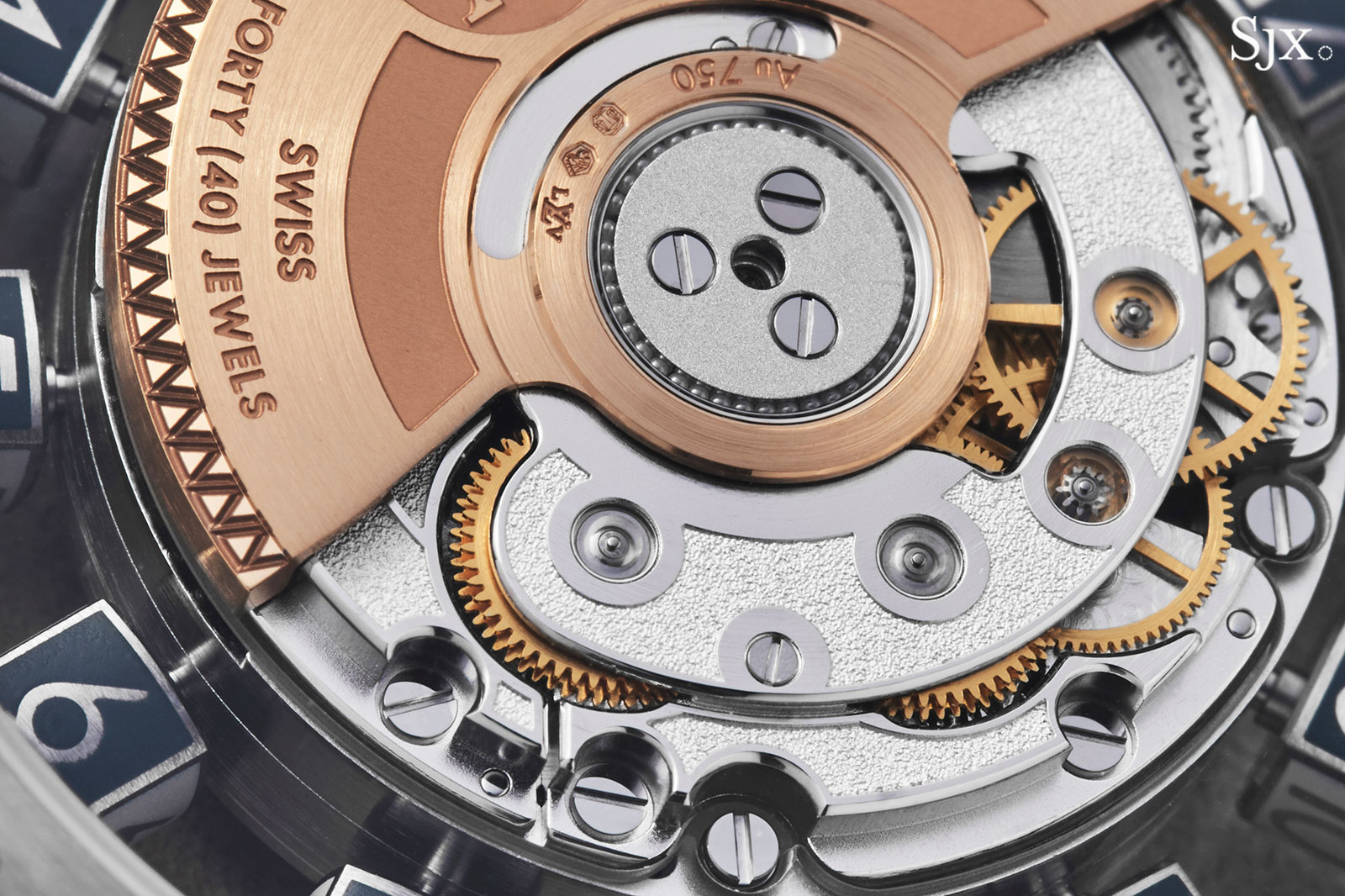
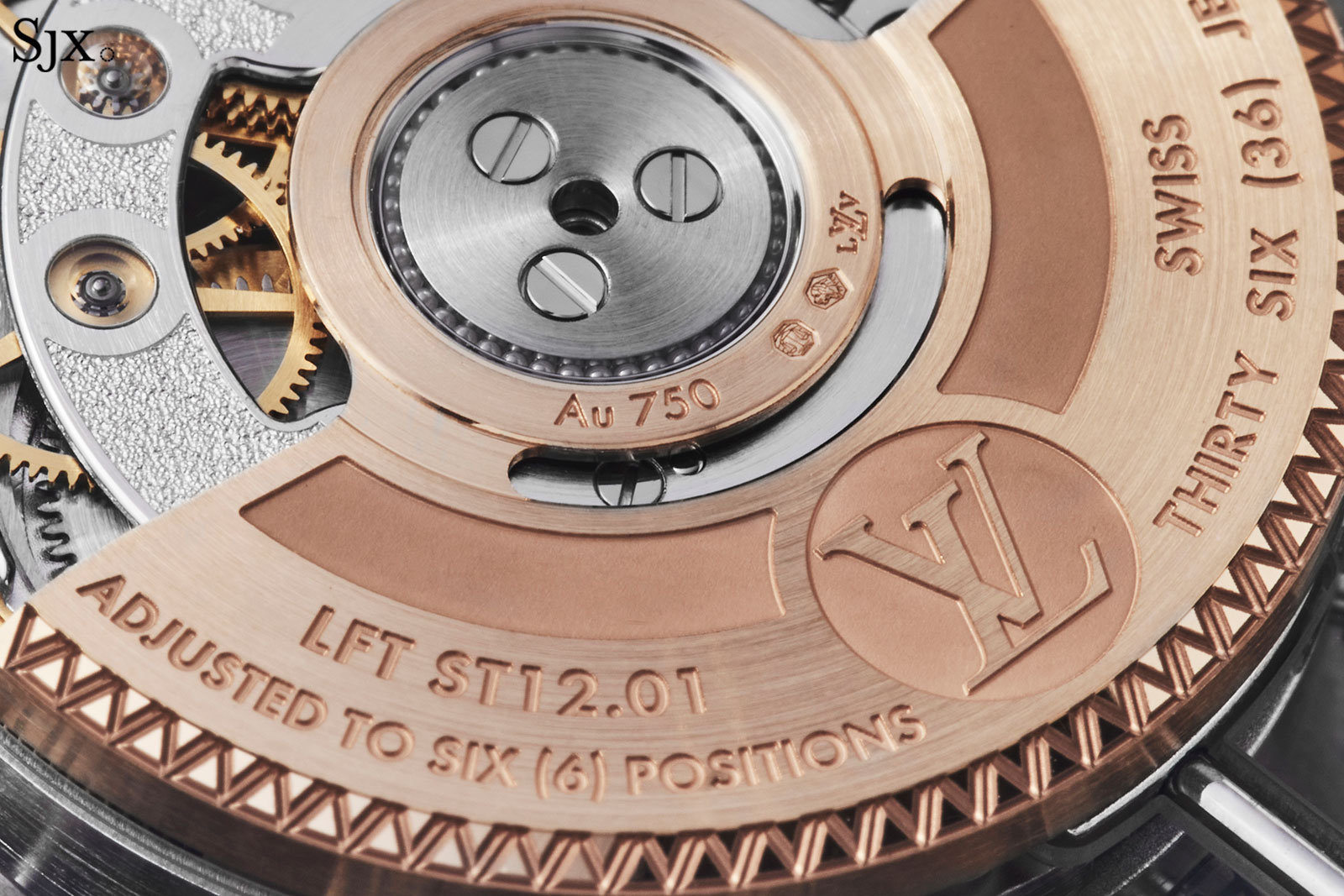
Concluding thoughts
I like Louis Vuitton’s direction with the Tambour Taiko, especially in terms of quality of the case and movement. Both are done well and make clear that Louis Vuitton is serious about manufacturing well-made watches. The evolution and growth of the movement family will be worth keeping an eye on, as this will also reveal something about the brand’s further ambitions in watchmaking.
Key facts and price
Louis Vuitton Tambour Taiko Spin Time Flying Tourbillon
Ref. W9WG11
Diameter: 42.5 mm
Height: 12.45 mm
Material: 18k white gold
Crystal: Sapphire
Water resistance: 50 m
Movement: Cal. LFT ST05.01
Functions: Central flying tourbillon, hours with spin time air display and minutes
Winding: Automatic
Frequency: 28,800 beats per hour (4 Hz)
Power reserve: 45 hours
Strap: Beige calf leather strap
Limited edition: No
Availability: Now at Louis Vuitton boutiques
Price: €158,000 excluding taxes
For more information, visit LouisVuitton.com.
Back to top.

